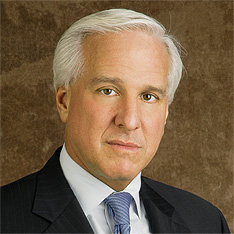'Leaders in the Law' Recognizes Lubin & Meyer Attorneys for Top Verdicts and Settlements
Firm records 4 of the top verdicts and settlements at annual Massachusetts Lawyers Weekly event
May 20, 2025- Leaders in the Law, Massachusetts Lawyers Weekly

Attorney Robert Higgins, verdicts and settlements honoree, with Henriette E. Campagne, editor of Massachusetts Lawyers Weekly, at the Leaders in the Law event on May 20, 2025, which spotlights leading lawyers who set the standard for other attorneys.
Three Lubin & Meyer attorneys were honored for four of the largest verdicts and settlements at the Leaders in the Law 2025 event held May 20, 2024 in Boston, MA. The event celebrates lawyers of the year, in-house leaders and the top verdicts and settlements of the year prior.
Lubin & Meyer attorneys who were honored as 2025 Leaders in the Law are:

Below are descriptions of the Lubin & Meyer achievements as published in the Leaders in the Law special publication by Massachusetts Lawyers Weekly, May 19, 2025.
- $3.4M Verdict - Medical Malpractice - Stroke Death
- $2.1M Verdict - Medical Malpractice - Death from Bowel Infarction and Septic Shock after Hip Replacement Surgery
- $7M Settlement - Medical Malpractice - Birth Injury
- $6.8M Settlement - Personal Injury - Construction site liability
$3.4 Million Verdict
Estate of Nancy McDonough v. Paudel, M.D.
William J. Thompson, Lubin & Meyer, Boston
A top verdict of 2024

Defense strategies sometimes attempt to blame the victim: A plaintiff could have and should have done ABC to prevent XYZ. Sometimes it succeeds.
Sometimes it can lose a case. Nancy McDonough, 57, had a fear of doctors and hadn’t seen one in years. In October 2014, she was admitted into Melrose Wakefield Hospital’s Emergency Department with shortness of breath and flu-like symptoms. She was also diagnosed with congestive heart failure, uncontrolled diabetes, uncontrolled hypertension, and atrial fibrillation.
The defense strategy of banking on McDonough’s fear of doctors failed when her estate’s legal team, headed by Lubin & Meyer’s William J. Thompson, passed on giving the premise oxygen and instead honed in on a series of missteps by the medical team leading to McDonough’s death four days after being admitted.
“It was an example of the defense focusing on some fact and thinking they were scoring a victory,” recalls the Boston litigator, whose team pieced together a powerful story of what McDonough and her family endured during the last days of her life. “[Her fear of doctors] was irrelevant, and we focused on the care of treatment and what happened at this hospital.”
Upon arrival to the emergency room, McDonough was started on Lovenox for her A-fib to prevent clot formation and decrease her risk of stroke. After two days, she developed an acute kidney injury, requiring the Lovenox to be stopped. The plaintiff claimed that McDonough should have been started on IV Heparin, though the defendant contended that SQ Heparin and aspirin were sufficient, given the lingering effects of Lovenox and because a cardiac catheterization was planned within the next two days.
“Our criticism at trial was, ‘It’s OK to take her off Lovenox if she was having impaired kidney function, but they have should have put her on something to prevent a clot and stroke,” says Thompson.
There were also fissures in the defense case at trial. “They didn’t have any expert support” for the above contentions, and the defendant also contended at trial that McDonough passed on having a strong coagulant because of the risk of bleeding.
“There was no evidence of that in the record,” says Thompson. “The hospitalist didn’t document it and only said it at trial.”
Thompson’s team further countered the hospitalist’s testimony by maintaining that McDonough’s husband had been on blood thinners for 10 years.
“Mr. McDonough testified that Ms. McDonough was aware of the trade-off of taking blood thinners and would not have declined,” recalls Thompson. “She had her husband as an example.”
Throughout the trial the defendant made no settlement offer, though while the jury was deliberating after the six-day trial, they made a high-low one, notes Thompson.
“It was paltry,” he recalls of the offer, “and not worth serious consideration.” — MLW
With interest, the judgment totaled over $6.6 million. See lawyer's trial report: Death from Stroke after Inadequate Anticoagulation
$2.1 Million Verdict
Estate of Richard Lacorazza v. Fernandez, M.D.
William J. Thompson, Lubin & Meyer, Boston
A top verdict of 2024

“The year 2024 was obviously a good one.” So says Boston attorney William J. Thompson, and with good reason: He secured not one, but two spots on this year’s roster of top Massachusetts verdicts.
The Lubin & Meyer litigator’s team secured $2.1 million verdict for the estate of 63-year-old Richard Lacorazza, who checked into Taunton’s Morton Hospital for hip replacement surgery in January 2014 and died from sepsis from an ischemic bowel.
The death was “very preventable,” says Thompson, who convinced a Bristol Superior Court jury that the physician in charge during Lacorazza’s last 24 hours was responsible for his death.
During the trial, Thompson was able to show that the doctor committed a string of actions, or inactions, that fatally compromised the standard of care Lacorazza received. Specifically, she failed to explore key symptoms Lacorazza was experiencing, such as severe abdominal pain, distention, and bloating, he says. She also passed on ordering critical procedures and tests, such as neglecting to insert a nasogastric (NG) tube or central venous catheter (central line), or conduct a CAT-scan, he notes.
“It was critical that she also didn’t transfer the patient to the ICU for a higher level of care” as Lacorazza’s condition continued to spiral, says Thompson, adding that the doctor’s testimony worked against her as well.
“The defense thought she did wonderfully,” he says. “Jurors thought otherwise.”
What’s more, the defense’s strategy of focusing on the decedent’s poor health unrelated to his hip surgery backfired.
“It’s an outdated view that there’s little to no risk of accountability simply because a patient has medical issues,” says the litigator, noting that the defense also hitched its strategy to another misconception that tanked: New Bedford juries skew toward defense verdicts, or if they do find for plaintiffs, damages awarded are modest at best.
“New Bedford is a historically difficult place to get a sizeable verdict,” says Thompson of the reasoning behind the strategy, adding that as a litigator he trusts that juries want and seek justice. “Collectively, jurors are very smart no matter what demographic.”
Thompson’s second top verdict on MLW’s 2024 list involved another med-mal case, Estate of Nancy McDonough v. Paudel, M.D. Even as the verdicts offer consolation to the remaining loved ones, an undercurrent of deep sorrow remains over the loss and especially how the decedents’ spent the last hours of their lives.
“They’re all sad cases,” says Thompson. — MLW
With interest, the judgment totaled $3,938,127.30. See related trial lawyer's report: Jury Finds Negligence in Bowel Infarction Death of Hip Replacement Patient
$7 Million Settlement
Andrew C. Meyer, Jr. and Robert M. Higgins, Lubin & Meyer, Boston
A top settlement of 2024


An infant suffered brain damage after being delivered by a nurse/midwife who failed to notice signs of difficulty, according to Robert M. Higgins of Lubin & Meyer, who represented the mother. “I think at the end of the day, there was agreement that there probably should have been a little bit more done for the child,” he says, “but getting to $7 million was not easy. They don’t like paying $7 million in a case, but this child’s injury warranted it.”
Higgins, who handled the case with Andrew C. Meyer Jr., says that it was the mother’s first pregnancy and she was expecting twins. Everything seemed to be progressing adequately and she was brought in to be induced.
Unfortunately, one of the pair began showing problems with its heart rate. “The real issue was that, as the day went on, the defendant labor nurse kept increasing the medication to induce the labor,” Higgins says.
He says continuing to bolster the dosage was a mistake and the nurse/midwife should have consulted a doctor.
“There are no accelerations and there starts to be drops in the baby’s heartrate called decelerations,” he says. “These were all going on during the afternoon and into the evening. Instead of recognizing it and alerting an obstetrician to it, she just kept increasing the medication.
That choice proved disastrous.
“Essentially, what she is doing is increasing the contractions on a baby that is already having difficulty with the contractions as it is,” he notes. Higgins feels that an alternate course of simply doing a Caesarean due to fetal distress was the better option.
“These babies are full term,” he says. “No reason not to deliver them.”
And that’s the decision that was made in the end. “That’s what they did,” he adds, “but it was just too late.” The result was oxygen deprivation and substantial brain injury to a baby who required resuscitation after birth.
The defense claimed there was no negligence and no problems had emerged until the end of the process. The medical facility in the case was not sued.
“In this situation, this midwife needed to know when she was in over her head and get an obstetrician in there,” Higgins says, noting the already high-risk nature of the pregnancy. “Providers need to understand that it is okay to ask for help.”
Higgins says the other twin showed no distress and was delivered free of problems. “It is sad when they both should have had the same opportunity to be born without injury,” he says. — MLW
See trial lawyer's report: $7 Million Settlement in Birth Injury Case Turned Down by Another Law Firm
$6.8 Million Settlement
Andrew C. Meyer, Jr. and William J. Thompson, Lubin & Meyer, Boston
A top settlement of 2024


For an object lesson in finding unique routes to compensation for one’s client, look no further than attorney William J. Thompson, and a case that originally looked to be a medical malpractice matter, but eventually evolved into a $6.8 million settlement, over a bump in the road. “When we dug a little deeper and did further investigation, it turns out that there was a general liability component for some highway work that was done,” says Thompson, who worked on the matter with Andrew C. Meyer Jr.
The case concerned a truck driver who suffered injury on the job when his vehicle drove over a bridge joist exposed due to a milling and repaving project on the interstate.
Road crews had attempted to soften the bump with an asphalt incline to level it out, but the incline had been affected by weather conditions.
“The rain collected where the ramp was and because there was pooling, the impact of the vehicles going through the puddle and hitting with some force caused part of this temporary ramp to wash out leaving a big pothole that my guy drove through,” Thompson says.
He says the impact was strong enough to cause the trucker to bounce in his seat and result in neck pain. Unfortunately, that condition worsened into total paralysis below the waist with only limited use of the upper extremities.
“It took several days for the injury to manifest itself with progressive symptoms,” he says.
The construction company denied both causation and any liability. However, Thompson says that further investigation turned an eye towards why the pooling phenomenon had occurred in the first place. Storm drain sediment-control devices called “siltsacks” turned out to be a potential issue.
“Our allegation was that they had put the silt sacs in appropriately, but they filled with dust and debris from the milling project and they had failed to clean them out,” Thompson says. “When the rain happened, instead of water being able to flow out through the silt sacs where it was supposed to go. It was clogged and wasn’t able to drain appropriately.”
Both sides had expert witnesses on construction design and the medical piece of the case.
“The bump itself could have caused some pressure on the spinal cord,” he says noting that an impingement from bone or another structure could cause damage over time.
But the important thing was to search for new avenues of compensation when the original medical malpractice case appeared to fizzle.
“Instead of just giving up on the claim, particularly given what we thought were very serious injuries, we tried to figure out any other potential responsible party and that’s how we focused on the incident on the roadway,” he says. — MLW
See trial lawyer's report: Truck Driver Suffers Paralysis from Pothole at Roadway Construction Site
Return to Medical Malpractice Lawyer News index
